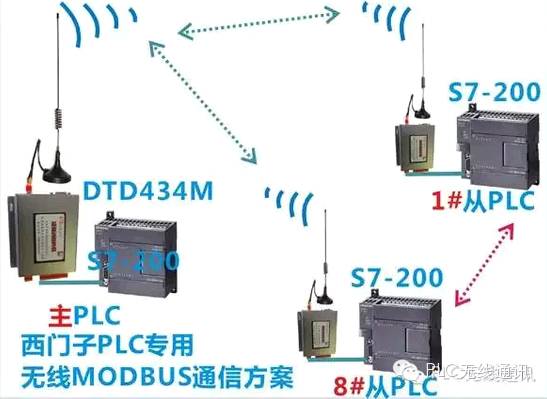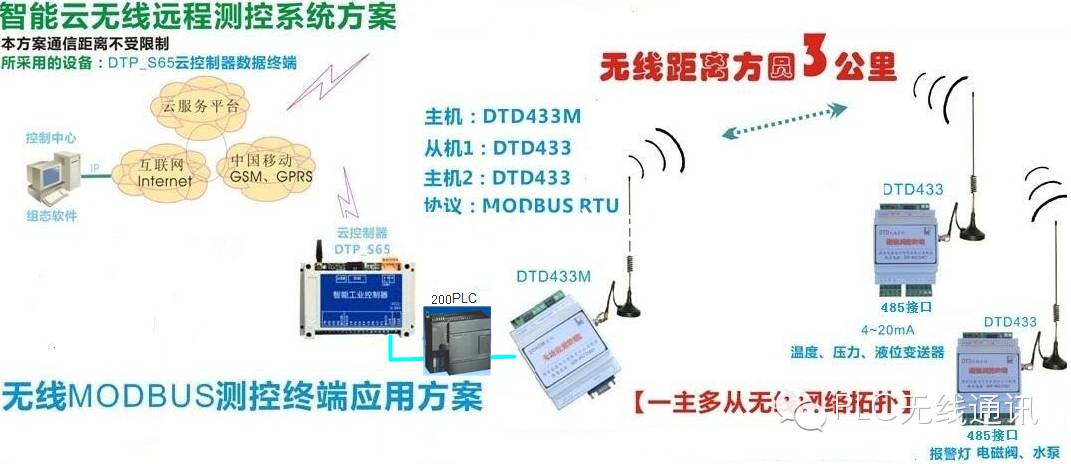Click Follow“PLC Wireless Communication” for daily amazing discoveries!
Follow“PLC Wireless Communication” for daily amazing discoveries!
Is RS-232 a standard communication interface or a protocol?? Is RS-232 a bus?? What is the relationship between fieldbus and networks?? Does each bus have a protocol?? What is the main function of the PLC communication module?? It’s all a mess, please advise, thank you. Whoever can explain it to me will be generously rewarded. Is this high-level knowledge of PLC?? I don’t know who can clarify it for me.
1. A bus is a method to connect multiple devices on a single physical communication link, allowing all devices to communicate with each other. It is obvious that RS-232 and RS-485 can be considered as buses. A fieldbus refers to a digital, serial, multi-point communication data bus between field devices installed in manufacturing or process areas and automatic devices in the control room. In simple terms, a fieldbus replaces traditional 4-20mA analog signals and ordinary digital signals transmission.
2. RS-232 and RS-485 are physical interfaces, simply put, they are hardware. They can also be described as communication interfaces. MODBUS is an international standard communication protocol used for data exchange between devices from different manufacturers (generally for industrial use); the so-called protocol can also be understood as a “language,” simply put, it is software.
3. In general, two devices transmit data using the MODBUS protocol: initially, RS-232C was used as the hardware interface (which is the serial communication port on a regular computer); RS-422 is also used, as well as the commonly used RS-485, which has a longer transmission distance and is more commonly used in industrial sites.
 The MODBUS protocol is divided into three modes: MODBUS RTU, MODBUS ASCII, and the later developed MODBUS TCP. The first two (MODBUS RTU, MODBUS ASCII) use serial communication ports (RS-232, RS-422, RS-485) as their physical hardware interfaces. MODBUS TCP, on the other hand, was developed to conform to the current global trend, where everything can be connected via Ethernet or the Internet for data transmission. Therefore, the MODBUS TCP mode uses Ethernet ports, which are the typical network ports we use on computers.
The MODBUS protocol is divided into three modes: MODBUS RTU, MODBUS ASCII, and the later developed MODBUS TCP. The first two (MODBUS RTU, MODBUS ASCII) use serial communication ports (RS-232, RS-422, RS-485) as their physical hardware interfaces. MODBUS TCP, on the other hand, was developed to conform to the current global trend, where everything can be connected via Ethernet or the Internet for data transmission. Therefore, the MODBUS TCP mode uses Ethernet ports, which are the typical network ports we use on computers.
In summary, RS-232 and PLC Ethernet belong to the lowest layer of communication media or standards, and corresponding communication protocols must be in place to achieve data exchange and transmission. A fieldbus is a type of network, and each has its own communication protocol. The main function of the PLC communication module is to collect field data, such as digital and analog quantities. For example, digital data collection occurs when a field contact is energized and closed, creating a loop; then the digital data collection module will convert this signal through optical or similar means and inform the PLC’s CPU that this is 1, which is the function of the DI module. The analog module will convert the 4-20mA signal from the field into a value recognized by the PLC, such as a range of 1000-5000, etc.
 You raised a supplementary question that others have already generally explained: PROFIBUS, MODBUS, DEVICENET, PROFIBUS-DP, CONTROLNET are different protocols for buses. The PLC network module has different functions compared to what I mentioned regarding DI and DO; the network module can achieve connections with remote PLCs, etc., depending on the extension methods of different PLCs. Network nodes refer to the computers or PLCs connected to the network, and network connectors are the interfaces at both ends of the transmission line. You ask if two PLCs can communicate via RS-232; of course, if you add related devices, just like a regular network cable, one cable can only connect two ends. To connect many computers, one cable is not enough; you need multiple cables and additional devices like a HUB or a switch. These principles are similar. It’s hard to accept all these concepts at once; however, once you encounter them in the future, you will understand quickly and won’t be overly concerned about some conceptual things. For instance, industrial HUBs, switches, or routers differ in concept or principle, but their functions are generally the same in industrial applications. Therefore, no one will deeply research whether it is a HUB, switch, or router, as long as it can achieve data transmission and sharing for industrial use. Whether it is at the physical layer or data link layer is not something that automation personnel need to worry about.
You raised a supplementary question that others have already generally explained: PROFIBUS, MODBUS, DEVICENET, PROFIBUS-DP, CONTROLNET are different protocols for buses. The PLC network module has different functions compared to what I mentioned regarding DI and DO; the network module can achieve connections with remote PLCs, etc., depending on the extension methods of different PLCs. Network nodes refer to the computers or PLCs connected to the network, and network connectors are the interfaces at both ends of the transmission line. You ask if two PLCs can communicate via RS-232; of course, if you add related devices, just like a regular network cable, one cable can only connect two ends. To connect many computers, one cable is not enough; you need multiple cables and additional devices like a HUB or a switch. These principles are similar. It’s hard to accept all these concepts at once; however, once you encounter them in the future, you will understand quickly and won’t be overly concerned about some conceptual things. For instance, industrial HUBs, switches, or routers differ in concept or principle, but their functions are generally the same in industrial applications. Therefore, no one will deeply research whether it is a HUB, switch, or router, as long as it can achieve data transmission and sharing for industrial use. Whether it is at the physical layer or data link layer is not something that automation personnel need to worry about.
This article is sourced from the internet. If there is any infringement, please contact our site staff, and we will delete it immediately upon receipt.
For detailed information, please scan the QR code for “PLC Wireless Communication Expert.”
New solutions and examples are provided for free download every week. With 14 years of experience to share with you.
Long press the image to recognize the QR code


Let’s share the materials from the PLC Wireless Communication Expert team together!
WeChat subscription number “PLC Wireless Communication”
“PLC wireless communication module” is provided by Datatronic Electronics, tested in industrial sites for twelve years.
DTD433M information: http://www.dataie.com/proshow41.html
Consultation phone: 18992829581 for free brand PLC wireless communication cases.
Join WeChat ID: DTD110HF to see the material password.
Click below“Read the original text”
↓↓↓